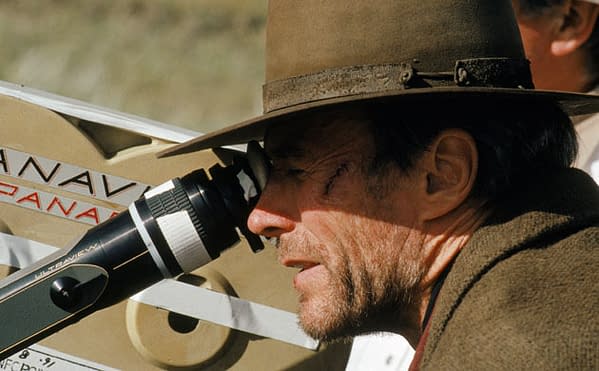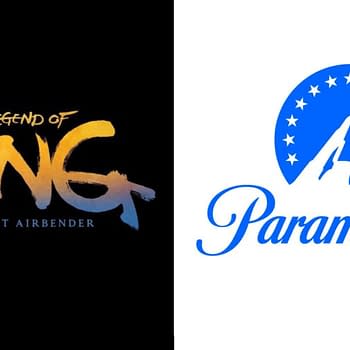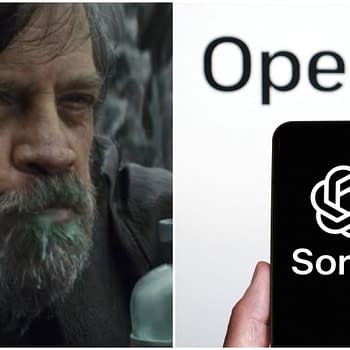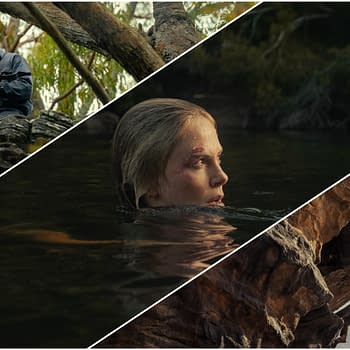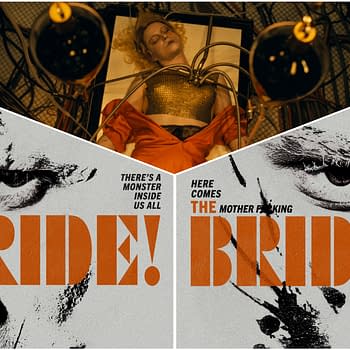Posted in: Movies, Recent Updates | Tagged: christopher nolan, clint eastwood, entertainment, film, film directing, indy filmmaking, Robin Hood Films, Storyboarding
Film Schooling – Insider Insights On Indie Filmmaking Part 5: Pre-Production And The Director
By Chris Hood
(This is Part Five of an ongoing series to help educate aspiring filmmaker on the process of making their first film. Previous articles in this series can be found at BleedingCool.com and MovieIndustry.com)
So now you've used my easy steps in the last four parts of this series and have a big bag full of money (or illegal substances you can sell to get the money…wait, that was my other article) with which to make your movie. Cool. Good for you. Now let's get to work.
Pre-production is everything that needs to be done up to the moment when the camera rolls for the first time. This is the planning part of the project and planning is everything. Although you can make or break the entire movie during this time, at the very least, what you do during these weeks or months will set the stage for how smoothly things go for you. And whom you hire will be the most significant set of decisions you can make. Obviously, this applies to both cast and crew, so let's start with the big cheese – the director.
I realize it's quite possible you already have your director picked out. Often times it's the writer who insists on directing his own script. It may be a director who has stepped into the producer role to put a film together so that he can hire himself for the job he REALLY wants. If this position isn't already committed to someone, choose very carefully. Yeah, sure, filmmaking is a "team effort" and all that other group effort crap, but it's the director's vision of the project that will make it to the screen. It's the director's attitude that will set the stage. Find someone with vision but also the ability to work well with people, relay his thoughts succinctly and quickly, be someone people can look up to, have a sense for pacing, have a sense for acting, understand the human dynamic, know how to juggle and break dance, understand quantum physics and have a viable new theory for an as-yet-untested cure for cancer.
Everyone thinks directing is easy. The reality is that most people aren't very good at it. Many can't handle the stress…but, darn it, don't listen to me, I'd rather see you go out there and fail for yourself! The hard part is, until someone has done it, you really don't know if they can do it at all. Directing a short film is a different animal. Directing a play qualifies you about as much as directing traffic. This is the danger of first time directors – it's a crap shoot, a coin toss, it Russian roulette, but unlike in The Deer Hunter there is only one empty chamber instead of three.
Another key problem with directors, especially first time directors, is ego. You'll see this on films of all sizes, but it's amazing how wearing the big boy pants can turn some people into instant douchebags – or somehow allows the inner douchebag that's been festering below the surface for years to finally break out. "Run, little douchebag! Run wild! You're finally free!" Be aware of this. Watch out for it. The director doesn't need to be loved, but he should at least be liked. The "Because I'm the director, bitch!" mentality is cancerous. Breakdowns in crew infect productions quickly and disastrously. It's fascinating to see an accountant making three grand for directing his first project with a $50k budget acting like the Joseph Stalin of film. An awful lot of people get drunk on power, even the misconception of power that comes with a little taste of it on a small project. A brilliant man once said – "You're not REALLY a director or writer or producer until you're making a living at it," (yes, that brilliant person was me). I know a guy who tells people he's a "TV personality". No, dude, you're a waiter who has a show on public access. I don't tell people I'm a marine because I play Call of Duty (although I have been known to tell hot chicks that I invented toothpaste – it actually worked until I met the woman who invented teeth).
Once your crackerjack director is on board, he has a number of tasks to prepare. Now, some of these will be left up to him entirely and others will be a collaboration between the director (though in some cases he's cut out on some/all of these), producers, the cinematographer and in some cases even investors. These decisions include what format to shoot on and what equipment to use, casting, crewing, locations, number of days/hours at given locations or for given shots/scenes, and what every director seems to most want to do – choosing, setting up and shooting the scenes per his soon-to-be-legendary vision. Let's start with that.
During pre-production, many insist that the director HAS to storyboard, that it's a MUST. Most first time filmmakers (including myself all those years ago in my auteur virginity) buy into this. We cinephiles were brought up on the amazing storyboards of professional artists from our favorite scenes in Star Wars, Raiders of the Lost Ark and The Matrix. Those beautifully crafted images which look like pages straight out of a comic book that seemed to morph perfectly into shots and scenes that matched exactly in the final, flawless picture that planted the seed for a dream of a career in film in the first place. Here's the thing – you're not shooting Star Wars or The Matrix. You don't have a studio budget. You probably don't have an amazing artist to draw thousands of pictures for you and, here's the big one, you don't NEED them.
Storyboards are great for complex action scenes. They're great for difficult camera moves. They're a wonderful tool for relaying to the cast and crew a tangible vision of the intent of a scene or shot. In many cases they absolutely help. In most cases they serve no real purpose. In most films in general and certainly with most indy films, you won't be having that many complex shots or scenes that benefit from this level of preparation. You'll need storyboards as much as you need to hire an artist to delivery a version of the script on parchment hand-written in calligraphy. When two actors are sitting across from each other talking, what's the point of a storyboard? None whatsoever, but an awful lot of first time filmmakers are caught up in the "necessity" of it and actually storyboard everything.
So keep the storyboarding to a minimum. There's better use of your time. I recommend a shot list most of the time. I find it's best for the director to come on set knowing what he expects from the scene. This could be as simple as: Shot One – master shot, Mike and Ike sitting at the table, Shot Two – coverage on Mike, Shot Three – coverage on Ike. Of course, you may have five shots or ten or even more for a given scene, but that's where being a competent director comes in – knowing your resources, your schedule, your needs, your wants and having a pragmatic approach to it all. You'll never have as much time as you want. You might for this scene, but not for that one. Time might be ample today, but tomorrow you'll be cursing the sun or the clock. Just because you want eight set-ups doesn't mean you have the time to get them…and the film might not be any better for it even if you do.
I'm sure some of you bright folks realized I said a shot list is recommended "most of the time." Yes, there are time when even a shot list isn't essential. If you're doing a scene like I mentioned above, a "master, cover, cover," you can write that down if you like and even break it down further if it makes you feel better about yourself. It's certainly good for the rest of the team to have an idea of what's in the plan for the day, so that's worth considering as well, but there are other factors that may affect the scenes or shot.
Some directors like to take a more organic approach to their scenes. Even some big directors, like Clint Eastwood and Christopher Nolan, often walk onto set without a shot list of any kind. There is something to be said for showing up at a location and seeing how it plays out with a minimum of direction. You may want Actor A to start at Spot X and move to Spot Y on a certain line, but it may feel and look more natural to let the actor experience the scene as their instincts dictate. They know their lines (you hope) and they know where the scene is going. Let them test it out. If it works, set up your shots around that. The more complex a scene is, the harder it is to craft certain elements and have them all come together in a way that feels natural. If you rehearse first and only then find your shots, you'll still have time to prepare them while the talent is getting ready.
The reality is, if you haven't directed before, you don't know what your style is. Frankly, you don't know anything, so this first film is a very expensive (and probably painful) learning experience. Don't storyboard every shot because you "think" that's how it's "supposed" to be done. Every director has their own style. Find your style; don't try to mimic someone else's.
Casting is another place where the director is generally given veto power. Again, this may be an area where elements are already in place. Talent is often attached to a picture to help secure funding, though probably not on your dinky little first film. There are times when directors hate certain actors or feel they are a terrible fit for their roles, but are forced to work with them. Deal with it. There is politics in film. I was on a movie where the primary financier insisted his girlfriend got the second female lead. Yes, this kind of thing happens, especially at this level. Money talks and more loudly than the director. Aside from those necessary evils of casting, it's generally the director who chooses the team he's going to put on the celluloid field, though it's the producer who hires the director, so, technically, it's at the producer's discretion. Then again, a good producer knows to pick his battles wisely as well.
Obviously there are many other tasks, both significant and mundane, that are heaped on the director's shoulders throughout the pre-production phase. More of these will come up in later articles and other new ones will rear their ugly heads during the actual process when you find yourself in the trenches. Hey, I'm not writing a novel here about directing, just giving you some broad strokes. My book on directing "dos & don'ts" will come later, but expect mostly "don'ts." I've certainly made my share of mistakes in that arena…the one goal I've embraced is to never make the same one twice.
We will circle around to the director again throughout this series, but next week we'll move on to the other two most important positions on the film; the cinematographer and the 1st A.D. See you then, nubian!
Chris Hood is a writer, producer and director of such films as "Counterpunch" starring Danny Trejo and "Dirty Dealing 3D" with Michael Madsen and C. Thomas Howell. He is also owner of Robin Hood Films, a Las Vegas-based distribution company representing English language films around the world and operates a film blog at MovieIndustry.com. He's also dead sexy. (Mr. Hood denies any involvement in the creation of this mini-bio.)



